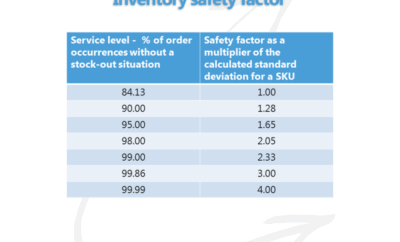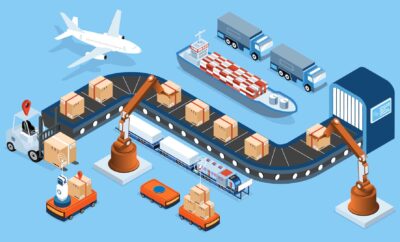
Logistics
Why Learning About Logistics Matters
Your supply chains and business
For generations, Logistics Matters supply chains and logistics have been an aspect of business. The significance of comprehending supply chains and their impact on your company’s logistics flows has expanded due to the rise in trade between developed and emerging nations over the past four decades.
The joining of organizations and their connections to facilitate the supply of a good is known as a supply chain. Selling goods and services to clients and consumers is how businesses generate revenue. The products you sell must be in stock if you want to profit. The following are the fundamental components of availability:
Having goods and services (items) accessible to your clients and consumers (end users) when they need them is the goal of your supply chains and logistics.
Your supply chains are a web of separate but connected businesses that deliver raw materials from the mine and farm to the final consumer. This implies that since network components interact within a system, the accomplishment of your business goal may be impacted by the performance of one component.
The goal can be supported by every component of the supply network, but very few, if any, of them depend on your company. Interaction with your supply network via people and technology is necessary to guarantee availability.
The capacity of your employees to work across organizational and functional barriers determines how well your supply network and logistics run.
The hazards are these strains on the supply chain. They are exacerbated by the present business acceptance of distance from suppliers and customers as well as the shrinkage of safety margins related to working capital, inventory, and time.
Therefore, your company’s supply chains and logistics are not just the domain of experts. All employees must be aware of your supply networks and how they affect the capabilities of your company in order to lower supply chain risks and boost business performance.
Cooperation
Why is it that all employees must understand supply chains and logistics? The reason for this is that supply networks disregard your organization’s functional barriers. Deliveries of sales orders must usually be made “in full, on time, with accuracy of all papers” (DIFOTA). Several organizational components must cooperate in order to accomplish this goal. Employees must understand both the “how” and the “why” of their jobs in order to do that.
There is a greater chance of overcoming the two obstacles to change when your employees understand the “why” behind their work in respect to the supply chains. The first is that individuals are inherently resistant to change, particularly when they do not know why. Second, individuals (and their managers) believe that if they focus on enhancing their function’s performance, the business’s performance would also improve—after all, we act as we are controlled.
Regretfully, supply chains are networks; they are systems that function as a whole. Positive acts in one area may have unfavorable effects in other areas. For instance, measures used to increase shipping lines’ profitability—like ship size, frequency of sailing, and container availability—may have a detrimental impact on your items’ availability. A company’s choice to outsource accounts payable to a low-cost nation may have an impact on supplier payments and, consequently, the delivery of upcoming supplies or goods. or the choice to make the product more
What and how to learn
Self-learning is becoming more popular in today’s classrooms, allowing students to study at their own speed. The degree of motivation required of the learner and the appropriate timing of group or individual instruction are hotly debated topics.
Multimedia capabilities have also been developed to aid with learning. Even though they are amazing to watch, the time required to create the learning materials means that using games, simulations, activities, and scenarios in the classroom has a cost. The cost per view can be affordable when learning a subject will include a large number of individuals, frequently during school hours. It will be more difficult to defend the development investment if the subjects are specialized or professional in nature.
Because of this, I think that personalized online learning can help people learn the fundamentals of supply chains and logistics. After that, the knowledge can be put to use in groups that join together to work through case study situations and simulations, fostering interactions that reinforce what has already been learned. Teleconferencing can be used to enhance the classes in order to facilitate greater discussion and conceptual understanding.
Therefore, it is possible to combine online learning, in-person instruction, and online conversations to create a curriculum that efficiently and economically fits the demands of your company or university/college class.




0 comments